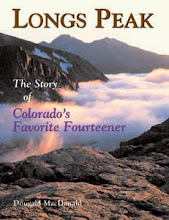After four days in Grindelwald, our little group of journalists drove over a high pass to the French-speaking side of Switzerland, specifically to the village of Leysin. This is where John Harlin III, star of the IMAX film The Alps, spent part of his youth in the 1960s. And what a place to be a kid! Skiing, hiking, climbing all in your back yard, with a view of the Mont Blanc massif shining across the valley of the Rhône. During the ’60s, Leysin was a great center of Alpine climbing, specifically the American and Anglo contingent—Dougal Haston, Royal Robbins, Gary Hemming, Tom Frost, and others—who based themselves here to work for the international school that John Harlin II cofounded and to hang out with friends and plot new routes.
We sampled a range of Leysin life, from mountain biking and hiking to eating, eating, and more eating. But the highlight was a via ferrata on the Tour d’Aï, a limestone fin that looms over the Leysin ski slopes. Via ferrata routes were invented in the eastern Alps during World War I, using steel cables, ladder rungs, and carved steps to safeguard the movement of troops through vertical terrain. Now they’re everywhere in the Alps, and some of them are like Jungle Gyms for adults, with crazy overhanging ladders and swinging bridges across otherwise unclimbable terrain. But the Tour d’Aï via ferrata followed a mostly natural line across ledges and up chimney systems; it required about 1,000 feet of traversing and climbing to ascend the 350-foot cliff.
Our guide was Julie-Ann Clyma, a charming Kiwi who lives in Leysin with her husband, Roger Payne, an Englishman and also a mountain guide. For many years, the two have done major expeditions to Asia and elsewhere (right now they’re attempting unclimbed peaks in Sikkim). Payne is like an Energizer Bunny with devilish tendencies. The night before, he had dragged one of our group to the Yeti bar in Leysin for karaoke, and the two men-children hadn’t made it home until after 3 a.m., making for a painful Alpine start for Payne, who was due to start guiding a Mont Blanc climb the next day.
After hiking up the ski slopes to a saddle below the cliffs, we kitted up. Most via ferrata climbers don’t use a rope or belays; instead, you attach a lanyard to your harness, equipped with two quick-locking carabiners and a clever shock-absorbing gizmo. As you move along the route, you always keep one carabiner clipped from your lanyard to a steel cable bolted to the wall. If you fell, the cable and bolts in the cliff would keep you from plunging too far, though you’d likely be battered. A few people in our group were nervous about the exposure, so Julie-Ann tied them in to a short rope, which she could pass through the open ends of the eyebolts holding the cable, providing quick simul-climbing anchors.
I’d done a few portions of via ferrata routes in the Dolomites, just poking round on rest days. But this was the first full route I’d ever done. What a blast! As we climbed higher, the route steepened to the point where a few passages climbed overhangs via steel rungs in the rock. Soon, the exposure was massive. I was climbing in front with Harlin and David Chaundy-Smart, editor of the Canadian climbing magazine Gripped, both of whom were monkeying around on the ladders—Harlin managed a nice flag maneuver, extending his body horizontally from the cliff, with a bit of an assist from his lanyard.
Another Canadian, Jim Barr from Edmonton, was right behind me; he had never done much climbing, but he was right at home. “Can I just say,” he said for about the seventh time near the top, “this is one of the coolest things I’ve ever done.”
The view took in much of the eastern Alps, from the Eiger across to the Matterhorn and Grand Combin, to Mont Blanc and the great peaks above Chamonix. We walked down the narrow spine of the Tour d’Aï toward the mer de brouillard (sea of clouds) that had flowed into the valleys below us. Then, at the base, we walked a few more minutes to a mountain restaurant where we tucked in for—what else—more eating!
Next up: The Robbins Route. To go to the start of these reports from Switzerland, click here.
Tuesday, October 09, 2007
The Tour d'Aï
Posted by
Dougald MacDonald
at
7:25 AM
![]()
![]()
Subscribe to:
Post Comments (Atom)








No comments:
Post a Comment